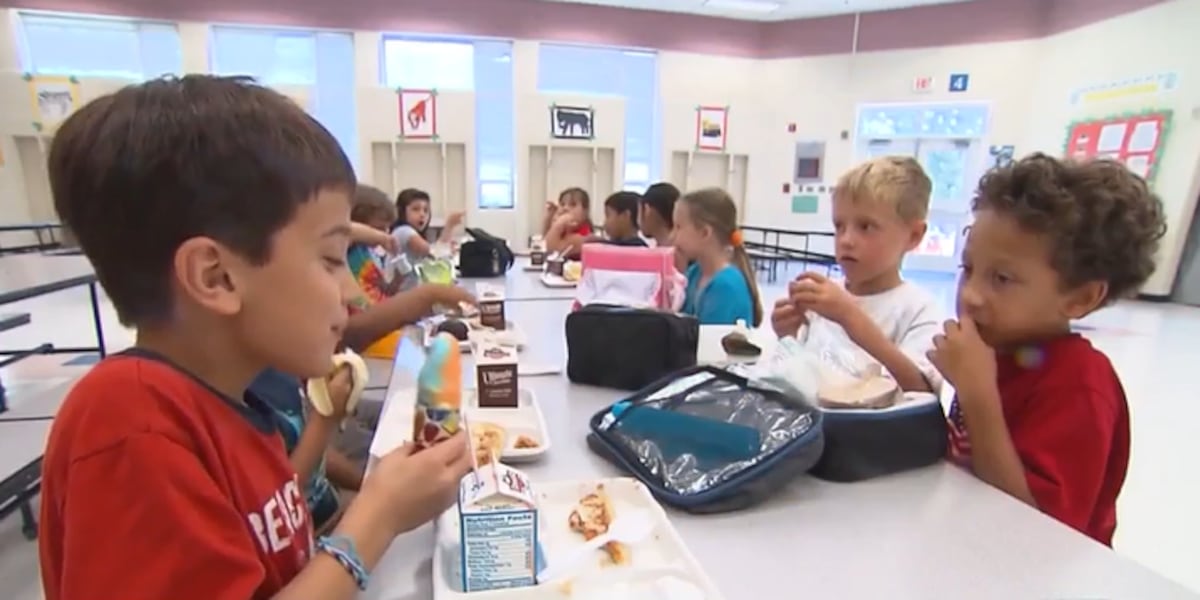
Maine Schools are Revolutionizing School Meals: A Focus on Local Ingredients and Nutrition
AUGUSTA, Maine — If you think school meals are just a quick serving of soggy pizza and bland mystery meat, think again! As we head into a new academic year, Maine schools are stepping up their culinary game, driven by a commitment to healthier, more locally sourced, and freshly prepared food options. With new USDA guidelines on the horizon, the landscape of school dining is about to change dramatically.
Jane McLucas, the Child Nutrition Director for Maine, authority on school food service programs, has witnessed a significant evolution in how we approach school meals. “There are some really great trainings going on out there,” McLucas stated. “I really encourage families to look into what’s happening in their schools. If they have concerns, they should reach out to their food service director. Our ultimate goal is to ensure that all kids in Maine are fed, and we’re hopeful that we can achieve that.”
The Benefits of Universal Meal Programs
One of the standout features of Maine’s educational system is its universal meal program, which provides all students with free breakfast and lunch. In a state where families are often challenged by economic disparities, this initiative is a game-changer. Maine students have the opportunity to enjoy nutritious meals without the burden of cost.
McLucas emphasized, “We’re the best value in town.” This program not only alleviates financial stress for families but also encourages healthy eating habits in children. Research has shown that proper nutrition is key to academic success, and Maine’s commitment to ensuring every student has access to nutritious meals is a commendable step in the right direction.
Embracing Local Ingredients
A clear trend emerging in school cafeterias is the emphasis on using local foods and seafood. This is particularly poignant given Maine’s rich maritime culture. Schools are now incorporating more seafood options while aiming for sustainability and supporting local fishermen. No longer are schools serving up frozen fish sticks; instead, students may get to enjoy fresh lobster rolls or baked haddock, prepared right on-site.
McLucas noted, “We are working closely with manufacturers to reduce the amount of sodium and sugar in our products while increasing the use of whole grains. Our commitment to scratch cooking means that we are able to prepare meals in-house using ingredients sourced from nearby farms and fisheries.”
New USDA Guidelines on the Horizon
The 2024-2025 academic year heralds the beginning of a nationwide overhaul of school meal standards with new USDA guidelines set to enhance the nutritional quality of foods served. These guidelines are particularly focused on reducing sodium and sugar levels, increasing the availability of whole grains, and imposing limits on the purchase of non-domestic products.
“The federal guidelines are a critical step in ensuring that our children receive the nutrition they need to thrive,” said McLucas. “From scratch cooking to incorporating local foods into our menus, we are making strides to improve the dietary habits of our students.”
These changes aren’t just buzzwords; they must be fully implemented by fall 2027. As schools across the country navigate this transition, Maine appears to be at the forefront, showcasing innovative food service programs that not only prioritize taste but also health and sustainability.
Encouraging Family Participation
As school meal programs evolve, parental involvement is more crucial than ever. The transition to fresh, local, and healthier school food options opens the door for families to engage actively with school nutrition programs. McLucas encourages families to take an interest in the menu offerings and nutritional guidelines put forth by their schools. Better awareness leads to better choices for kids.
“By reaching out to food service directors and expressing what they would like to see on the menu, families can play an integral role in shaping the dining experience for their children,” McLucas added.
Conclusion
As Maine schools lead the way in redefining nutritious and appealing meal options for students, the benefits extend beyond mere taste. This initiative creates a healthier future generation better equipped to face academic challenges. With the focus on local sourcing, scratch cooking, and compliance with new USDA guidelines, it’s a thrilling time for school meals in Maine—one that champions both health and community.
As the school year begins, parents across the state can take pride in knowing that their children are being provided not just with meals, but with the building blocks of lifelong healthy eating habits. It’s a win-win that highlights the commitment to youth wellness while reimagining the cafeteria experience. So, the next time you think about school food, remember—the menu is changing, and it’s looking better than ever!

